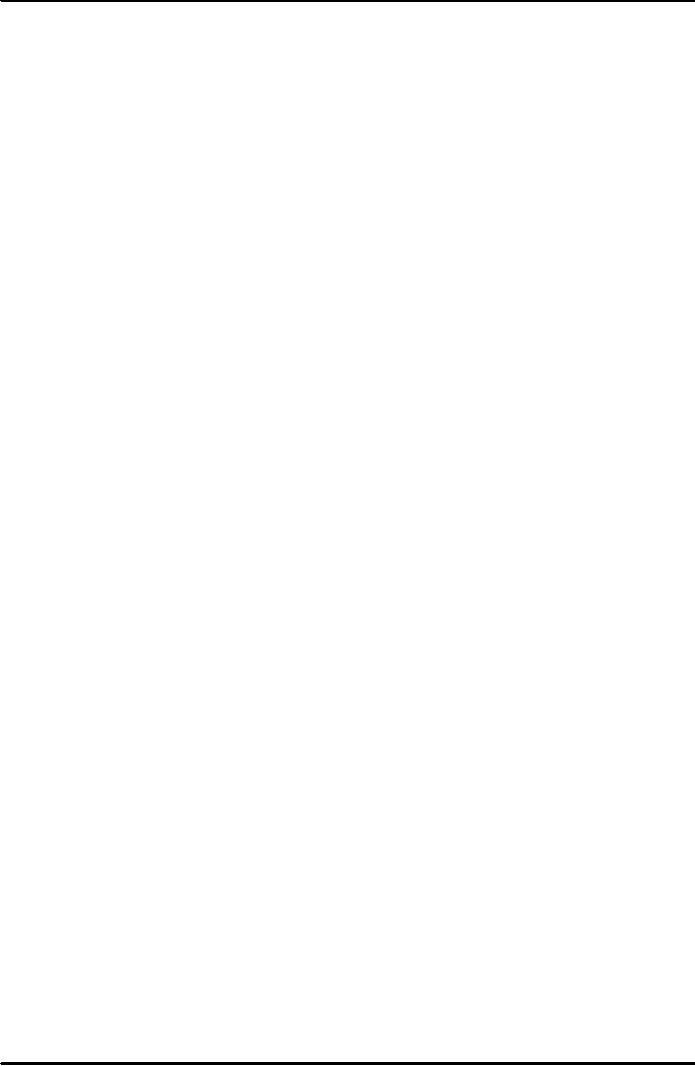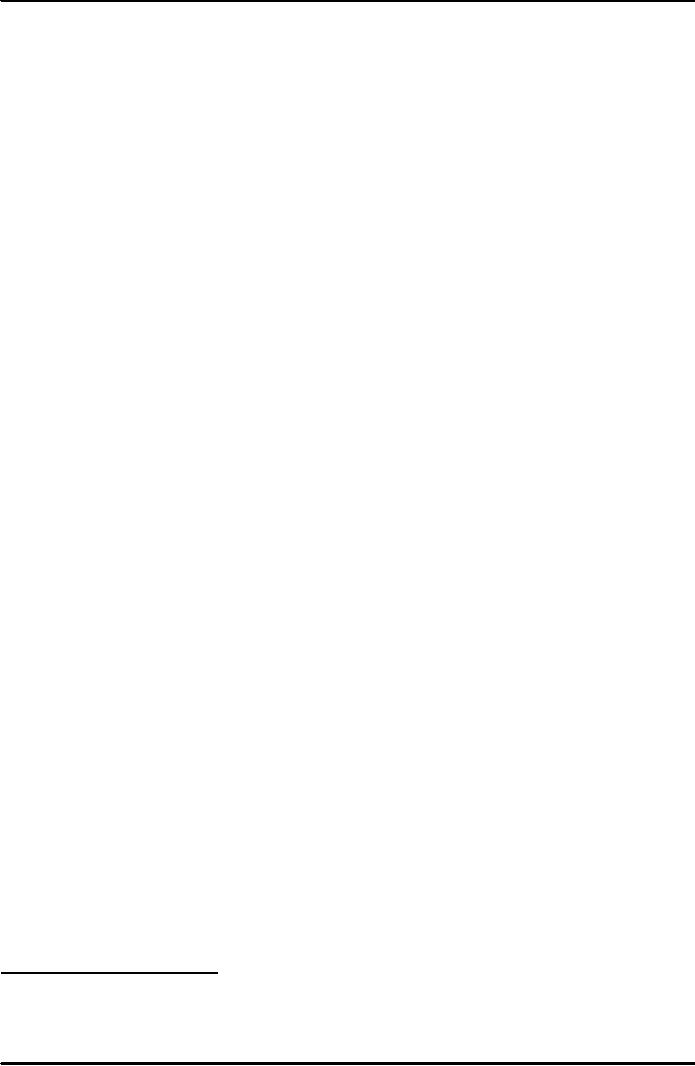 |
MONEY, CENTRAL BANKING AND MONETARY POLICY |
| << FISCAL POLICY AND TAXATION:Budget Deficit, Budget Surplus and Balanced Budget |
| MONEY, CENTRAL BANKING AND MONETARY POLICY (CONTINUED…….) >> |

Introduction
to Economics ECO401
VU
UNIT
- 13
Lesson
13.1
MONEY,
CENTRAL BANKING AND MONETARY
POLICY
The
Concept of Money:
Money
or paper currency serves at
least three functions: it is a
medium of exchange, a store
of
value
and a unit of account.
Before paper money (and we
are talking of not so long
ago!),
people
used coins which had
intrinsic value (gold,
silver, bronze). Before that
(and now we are
talking
of very long ago!) there
was barter trade, where
goods and services were
exchanged
for
goods and services and
there was no monetary medium
of exchange, per se.
Money
Supply and Its Various
Definitions:
There
is a process by which money is
created the money
supply process, and there
are
ideas
about why people hold
money money demand
theories. We'll tackle these
in order and
then
develop an understanding of money
market equilibrium.
Before
getting a handle of the
money supply process, we
must understand the
various
definitions
of money supply (denoted by
Ms). At this introductory
stage, we'll introduce
only
three
definitions:
a.
M0:
also
called base money, high
powered money or the
monetary base. M0 is
the
value
of all the currency notes
and coins that are in
circulation in the economy.
Note
that
any currency or coins lying
with the central bank
(which in Pakistan's
context,
would
be the State Bank of
Pakistan) does not count as
M0, as it is not in circulation.
b.
M1:
is
M0 + all current (or
checking) deposits held with
commercial banks.
Checking
deposits
are accounts from which
the holders can withdraw
money at any time.
c.
M2:
is
M1 + all time deposits. Time
deposits are accounts from
which holders can
withdraw
money only after giving
the banks some notice
(usually a few months).
When
talking
about money supply, this is
the measure we often refer
to. The relationship
between
M2 and M0 is the key to
unraveling the money supply
process. If you are
wondering
how money supply can be
greater than M0, consider
one simple answer
(in
QTM
vein). A 100 rupee note
counts as Rs. 100 only
for M0; but if that note
goes round
the
economy and changes hands 5
times in a year, then the
value of that 100
rupee
note
is Rs. 500 in an M2 context.
From the definition of M2
and M0, however, it is
clear
that
there is something commercial
banks do which causes the
value of that 100
rupee
note
to rise from Rs. 100 to
Rs. 500.
What
do commercial banks
do?
They
take deposits (i.e. borrow
money) and make loans
(i.e. lend money). The
interest rate
they
pay on deposits is lower
than the interest rate
they charge on their loans.
The difference
covers
their overhead costs and
profits.
If
banks on-lend all the
money they receive as
deposits, they would not be
able to give any
money
back to depositors who come
to withdraw money from their
accounts. On the
other
hand,
if banks on-lent nothing and
kept all the money
they receive as deposits in a
locked
safe,
then there is no profit they
will make. There is thus a
trade-off between liquidity
(having
cash
at hand) and profitability.
Banks often resolve this
trade-off by maintaining cash
reserves
which
are a small ratio of total
deposits. Thus if deposits
are Rs. 100, banks
might decide to
keep
Rs. 10 of that money in the
form of a liquidity reserve
(to meet the needs of
depositors
who
might come to withdraw money
on any particular day) and
lend the remaining Rs. 90
as
loans
to businesses. In this case
the reserve ratio is 10%
(i.e. 10/100). Sometimes
this reserve
ratio
is imposed as a central bank
requirement that commercial
banks must fulfill.
The
Money Creation
Process:
We
can now study the
money supply or creation
process. Imagine the
government wishes to
buy
pencils worth Rs. 10 for
its officials. The supplier
firm is called S and has a
deposit
account
with Bank A. In order to buy
the pencil, the government
asks the central bank to
print
141

Introduction
to Economics ECO401
VU
a
10 rupee note and give it to
the government.5 This
action causes M0 to expand by
Rs. 10.
Now
the government pays this
amount to S (in exchange for
the pencils) who in turn
deposits
the
money into his account in
Bank A. What does A do?
Assuming it operates a safety
cushion
or
reserve ratio of 10%, A will
add Re. 1 to its liquidity
reserve and lend Rs. 9 to
firm T. Firm T,
takes
the Rs. 9 and deposits it in
another Bank B. B acts in a
similar way: it adds 90
paisa
(10%
of Rs. 9) to its existing
liquidity reserve and lends
the remaining Rs. 8.1 to
firm Z. The
process
goes on, the amount
lent falling each time by a
factor of 10%.
If
the money creation process
is set up as an infinite series
(starting from the central
bank
printing
the ten rupee note), we
will have 10 + 10*(90%) +
10*(90%)*(90%) +
10*(90%)*(90%)*(90%)
+ ....... which is an infinite converging
series with a first term of
10 and
a
convergence factor of 0.9
(or 90%). The sum to
infinity of this series is
10/(1-0.9) = 100.
Thus,
an initial M0 expansion of Rs. 10
has a total money supply
(or M2) impact of Rs.
100,
thanks
to the intermediation of commercial
banks. There is a money
multiplier (MM) at play of
magnitude
10.
The
Money Multiplier:
If
you look carefully, the
money multiplier is nothing
but the inverse of the
reserve ratio. Thus,
we
can write MM = 1/rr, where
rr is reserve ratio. Generally, in
stock terms we can write, M2
=
MM*M0
= (1/rr)*M0; and in flow
terms we can write, ΔM2 =
(1/rr)*ΔM0. The
higher the reserve
ratio,
the higher the leakage, so
to speak, from the money
creation process and thus
the lower
the
money multiplier. In the
extreme, when rr = 100%, MM is 1,
and M2 = M0.
To
complete our understanding of
the money supply process
let us now zoom in on the
central
bank's
balance sheet. To keep
things simple, we'll
consider the balance sheet
of the State
Bank
of Pakistan, SBP, abstracting
from the more complicated
ones held by the U.S.
Federal
Reserve
Bank, the European Central
Bank or the Bank of England.
The choice of SBP
is,
however,
for illustration purposes
only and does not
reflect on SBP's actual
financials.
5
Note
that we use the terms
government and central bank
to mean two distinct entities. By
government, we mean
the
Ministry of Finance, or the
Treasury. The central bank,
although a part of the
broader definition of
government,
is a separate entity in an accounting and
administrative sense. As such, in
this discussion of
the
monetary
sector, we consider the
central bank as an entity separate
from, and lying outside,
the government.
142
Table of Contents:
- INTRODUCTION TO ECONOMICS:Economic Systems
- INTRODUCTION TO ECONOMICS (CONTINUED………):Opportunity Cost
- DEMAND, SUPPLY AND EQUILIBRIUM:Goods Market and Factors Market
- DEMAND, SUPPLY AND EQUILIBRIUM (CONTINUED……..)
- DEMAND, SUPPLY AND EQUILIBRIUM (CONTINUED……..):Equilibrium
- ELASTICITIES:Price Elasticity of Demand, Point Elasticity, Arc Elasticity
- ELASTICITIES (CONTINUED………….):Total revenue and Elasticity
- ELASTICITIES (CONTINUED………….):Short Run and Long Run, Incidence of Taxation
- BACKGROUND TO DEMAND/CONSUMPTION:CONSUMER BEHAVIOR
- BACKGROUND TO DEMAND/CONSUMPTION (CONTINUED…………….)
- BACKGROUND TO DEMAND/CONSUMPTION (CONTINUED…………….)The Indifference Curve Approach
- BACKGROUND TO DEMAND/CONSUMPTION (CONTINUED…………….):Normal Goods and Giffen Good
- BACKGROUND TO SUPPLY/COSTS:PRODUCTIVE THEORY
- BACKGROUND TO SUPPLY/COSTS (CONTINUED…………..):The Scale of Production
- BACKGROUND TO SUPPLY/COSTS (CONTINUED…………..):Isoquant
- BACKGROUND TO SUPPLY/COSTS (CONTINUED…………..):COSTS
- BACKGROUND TO SUPPLY/COSTS (CONTINUED…………..):REVENUES
- BACKGROUND TO SUPPLY/COSTS (CONTINUED…………..):PROFIT MAXIMISATION
- MARKET STRUCTURES:PERFECT COMPETITION, Allocative efficiency
- MARKET STRUCTURES (CONTINUED………..):MONOPOLY
- MARKET STRUCTURES (CONTINUED………..):PRICE DISCRIMINATION
- MARKET STRUCTURES (CONTINUED………..):OLIGOPOLY
- SELECTED ISSUES IN MICROECONOMICS:WELFARE ECONOMICS
- SELECTED ISSUES IN MICROECONOMICS (CONTINUED……………)
- INTRODUCTION TO MACROECONOMICS:Price Level and its Effects:
- INTRODUCTION TO MACROECONOMICS (CONTINUED………..)
- INTRODUCTION TO MACROECONOMICS (CONTINUED………..):The Monetarist School
- THE USE OF MACROECONOMIC DATA, AND THE DEFINITION AND ACCOUNTING OF NATIONAL INCOME
- THE USE OF MACROECONOMIC DATA, AND THE DEFINITION AND ACCOUNTING OF NATIONAL INCOME (CONTINUED……………..)
- MACROECONOMIC EQUILIBRIUM & VARIABLES; THE DETERMINATION OF EQUILIBRIUM INCOME
- MACROECONOMIC EQUILIBRIUM & VARIABLES; THE DETERMINATION OF EQUILIBRIUM INCOME (CONTINUED………..)
- MACROECONOMIC EQUILIBRIUM & VARIABLES; THE DETERMINATION OF EQUILIBRIUM INCOME (CONTINUED………..):The Accelerator
- THE FOUR BIG MACROECONOMIC ISSUES AND THEIR INTER-RELATIONSHIPS
- THE FOUR BIG MACROECONOMIC ISSUES AND THEIR INTER-RELATIONSHIPS (CONTINUED…….)
- THE FOUR BIG MACROECONOMIC ISSUES AND THEIR INTER-RELATIONSHIPS (CONTINUED…….):Causes of Inflation
- THE FOUR BIG MACROECONOMIC ISSUES AND THEIR INTER-RELATIONSHIPS (CONTINUED…….):BALANCE OF PAYMENTS
- THE FOUR BIG MACROECONOMIC ISSUES AND THEIR INTER-RELATIONSHIPS (CONTINUED…….):GROWTH
- THE FOUR BIG MACROECONOMIC ISSUES AND THEIR INTER-RELATIONSHIPS (CONTINUED…….):Land
- THE FOUR BIG MACROECONOMIC ISSUES AND THEIR INTER-RELATIONSHIPS (CONTINUED…….):Growth-inflation
- FISCAL POLICY AND TAXATION:Budget Deficit, Budget Surplus and Balanced Budget
- MONEY, CENTRAL BANKING AND MONETARY POLICY
- MONEY, CENTRAL BANKING AND MONETARY POLICY (CONTINUED…….)
- JOINT EQUILIBRIUM IN THE MONEY AND GOODS MARKETS: THE IS-LM FRAMEWORK
- AN INTRODUCTION TO INTERNATIONAL TRADE AND FINANCE
- PROBLEMS OF LOWER INCOME COUNTRIES:Poverty trap theories: